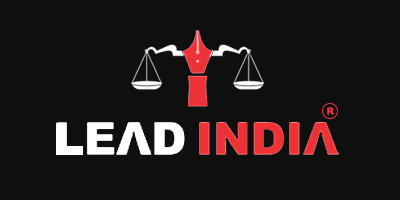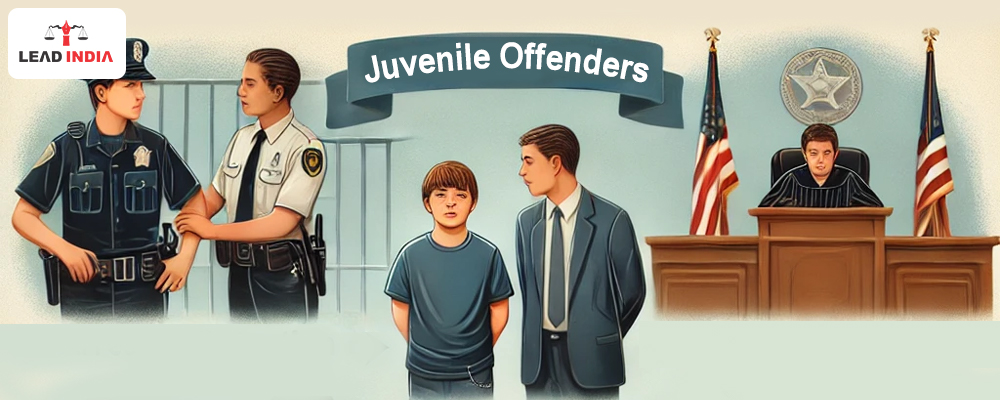Juvenile delinquency is an urgent social issue and is to be dealt with differently from how adult offenders are treated in that it gives rise to reformation rather than punishment. These functions work to provide corrections in the juvenile justice system oriented towards reform for accepting youth offenders into society.
Importance of Addressing Juvenile Offenders
The philosophy governing the juvenile justice system is diverted towards saving young offenders from becoming repeat criminals. Victims of juvenile crime may not just be limited, but include children with different problems of family background, peer pressure, education, and socio-economic difficulties. These might be taken care of by ideally setting a meeting within the legal and rehabilitation process, which can show a light of salvation for younger juvenile delinquents to go about their rehabilitation towards good citizens.
Need A Legal Advice
The internet is not a lawyer and neither are you. Talk to a real lawyer about your legal issue

International Legal Framework
United Nations Convention on the Rights of the Child (UNCRC):
- The commission of a crime indicates that all victims below the age of 18 are juveniles.
- Emphasizes rehabilitation instead of punishment.
- Calls for a different juvenile justice system apart from an adult criminal law system.
Beijing Rules (1985):
- Sets minimum standards for juvenile justice.
- Cultivates alternative dispositions instead of formal judicial proceedings concerning a juvenile, such as diversionary programs.
Riyadh Guidelines (1990):
- Focuses on preventive policies so that juveniles do not engage in crime.
- Encourages education, employment, and social programs.
Havana Rules (1990):
- Facilities for providing insight on the safeguards to be provided for juveniles deprived of liberty.
- Immediate provision for humane and educational treatment.
Legal Framework in India
Juvenile Justice (Care and Protection of Children) Act, 2015:
- A composite piece of legislation that internalized all laws concerning crimes committed by children below 18 years.
- No child below the age of 16 may be tried as an adult.
- In serious offenses, onward to an offense falling under the purview of adult criminal courts may at all times, apply to juveniles over the age of 16. An adult criminal sentence may be in this case 7 or more years in prison.
- The provisions of this Act establish a Juvenile Justice Board (JJB) to adjudicate upon the cases.
- Contains provisions regarding rehabilitation, social reintegration, and reform.
Indian Penal Code (IPC)/ Bhartiya Nyaya Sanhita (BNS):
- Section 82 of IPC/ Section 20 of BNS: Absolute immunity for children below 7 years. (doli incapax).
- Section 83 of IPC/ Section 21 of BNS: Conditional immunity for children aged 7-12 years, depending on their social maturity.
Bharatiya Nagarik Suraksha Sanhita (BNSS), 2023 (Replacing CrPC)
- Upholding notable juvenile justice provisions but uniting with modern criminal procedures.
- Fast-tracking the trial procedures for juveniles involved in heinous offenses.
Types of Juvenile Offenses
Usually classified based on the severity of the crime and the intention of the adolescent committing it; these mainly include:
Petty Offenses:
- Minor acts or violations with little or no consequence to anybody else.
- Examples:
- Truancy (skipping school)
- Curfew violations
- Running-away
- Minor Drinking
Status Offenses:
- Crimes at which the individual can be labelled because they are considered by society as punishable even though they are not wrongdoing or fulfilled as a minor.
- Examples:
- Being in a particular area during curfew
- Under-age smoking
- Skipping school
Misdemeanor Offenses:
- Slightly serious crimes where there may be an actus reus and a mens rea involved.
- Examples:
- Shoplifting or a petty theft
- Vandalism (graffiti, damage of personal property)
- Disorderly conduct
- Simple assault (fights that do not result in major injuries)
Felony Offenses:
- Very serious acts that can result in harsher consequences.
- Examples:
- Drug possession or distribution
- Grand theft (stealing items that are expensive)
- Aggravated assault or robbery
- Arson
Violent Offenses:
- The offenses that include injuries or urgent threats for hurting anybody.
- Examples:
- Homicide or manslaughter
- Sexual assault
- Armed robbery
- Kidnapping
Drug-Related Offenses:
- Crimes involving illicit drugs.
- Examples:
- Possession of illicit drugs, such as marijuana or cocaine
- Selling or trafficking of drugs
- Drunk driving or driving while under the influence of drugs
Cyber Crimes:
- Crimes committed through technology.
- Examples:
- Hacking
- Cyberbullying
- Identity theft
- Fraud,
- Extortion
- Online harassment
In India, the parents of the juvenile are required to be informed and be present during the whole duration of any arrest and investigation of the accused. By this, no confessions can be extracted through coercion. As a result of the application and provisions of the Juvenile Justice Act, the court may punish juveniles after respecting their age and the nature of the offense they committed. Such issues can only be probed as a felony if they regard serious offenses, which may include those involving juvenile offending from 16-18 years of age.
Arrest and Detainment
Procedures for Arresting Juveniles:
The procedure to be followed by the police during the arrest of minors is different from those of the adult cases. This would involve, among other things:
- Informing a minor of his rights.
- Immediate notification to the parents/guardians.
- Detaining or releasing the accused.
Rights of a Juvenile during the Arrest:
The rights accorded to juveniles are:
- The right to remain silent.
- To be defended before a court of law by an advocate of their choice.
- Protection from self-incrimination.
Detention vs. Release:
The police have a choice of two courses of action:
- Warning the juvenile and releasing them to their parents/guardians.
- Detaining them until they can come before a juvenile facility according to due course of law.
Initial Hearing and Charges
What is the purpose of an Initial Hearing?
It is the first stage of a court hearing to find out whether there is reliable evidence against the accused juvenile. The judge may dismiss the charge, send it to diversion programs, or give the date for the trial.
How are Charges Established?
Prosecutors consider the evidence in deciding whether or not to formally charge a juvenile. In some situations, if the alleged offense is serious, the juvenile may be charged as an adult.
Role of Legal Representation
A juvenile is to have the right to an attorney, so as to ensure that a juvenile is afforded fair treatment under the law.
Pre-Trial Proceedings
- Discovery: The attorneys on both sides shall exchange evidence in the form of witness statements and police reports.
- Negotiating a Plea: Sometimes, the juvenile admits guilt and agrees to undergo some rehabilitation in exchange for lesser charges.
- Motions and Hearings: A motion by a defense attorney may ask that evidence be suppressed or an alternative sentence be granted.
Trial Process
Structure of Juvenile Trials: These juvenile trials are less formal when compared to adult trials mostly as far as the aspects of trial and some of them may even take place in closed courtrooms to protect the identity of the minor.
Roles of Judges, Defense, and Prosecutors:
- Judges: Emphasis on rehabilitation and fairness while following the rule of law.
- Defense: Always acts in the juvenile’s best interest.
- Prosecutor: Present the evidence and seek appropriate punishment.
Evidence and Witnesses in Juvenile Cases: Witnesses and evidence are very important, although many cases expand on social and psychological evaluations to become better determined for the minor.
Sentencing Options
Types of sentences open to Juveniles:
- Probation: Supervised under conditions such as attending school or counselling.
- Diversion programs: Rehabilitation programs instead of formal charges.
- Detention centers: Juvenile forms of correctional facilities.
- Community service: That makes sure offenders give back to the community.
Rehabilitation vs. Punishment: The system has shifted its focus toward rehabilitation rather than punishment through education, therapy, and mentorship.
Impact of Sentencing on Future Opportunities
It dictates the education and job opportunities that record sealing and rehabilitation programs are crucial after a conviction.
Support Services for Juveniles
- Counselling and Therapy Options: Notably for mental health, which is very important in preventing recidivism if addressed at the juvenile stage, hence subjecting them to therapy to take care of those behavioural problems.
- Educational Programs: Allowing school reintegration with vocational education creating a brighter future.
- Family Support and Restoration: Through family counselling, relationships can be mended, while at the same time provide stability to foster rehabilitation.
Landmark Judgments on Juveniles
Sheela Barse v. Union of India (1986) AIR 1773
- Issue: Custodial Protection of Juveniles.
- Judgment: The Supreme Court emphasized the need for separate treatment of the detainees. It also insisted upon legal aid and rehabilitation measures.
Gaurav Jain v. Union of India (1997) 8 SCC 114
- Issue: Developing children with such background and juvenile delinquency-issue.
- Judgment: The Court favoured rehabilitation against mere punishment and ordered the setting up of juvenile homes and welfare institutions.
Shilpa Mittal v. State (NCT of Delhi) (2020) 2 SCC 787
- Issue: The classification of heinous offences under the Juvenile Justice Act of 2015 was questioned.
- Judgment: The Supreme Court concluded that in juvenile cases an offense must be seven years or more to be classified as heinous.
Conclusion
Juvenile cases must teach responsibility alongside rehabilitation of the offenders. They should be recognized by their lawyers, families, and communities for exclusion from the juvenile justice system. These supportive systems, and most especially, the involvement of families, educative opportunities, and community-based programs remain critical to reducing recidivism and moving towards positive re-integration of juveniles. We have the justice system providing these children with rehabilitation and changes in their trajectories toward productive futures.
One can talk to a lawyer from Lead India for any kind of legal support. In India, free legal advice online can be obtained at Lead India. Along with receiving free legal advice online, one can also ask questions to the experts online free through Lead India.
FAQs
1. What are the basic objectives of the juvenile justice system?
Juvenile justice is generally aimed at rehabilitation instead of punishment. It essentially involves rehabilitation, reintegration, and second chance provision rather than impunity.
2. What is the basic distinction between adult criminal justice and juvenile justice?
Juvenile justice treatment is predominantly oriented towards reform and rehabilitation of children into society, while adult justice involves punishment and deterrence. In most cases, the juveniles’ records are sealed, while the choices of sentencing are normally counselling, community service, or diversion programs.
3. What is the reason that the law allows certain juveniles to be tried as adults?
Yes, if a child who is aged 16-18 commits heinous crimes, he is punished as an adult, falling within the domain of the Juvenile Justice Act 2015 (which is for crimes with punishments of 7 years of imprisonment or more). The Juvenile Justice Board may transfer the case for trial to the sessions court as per its discretion in such cases.





 Talk to a Lawyer
Talk to a Lawyer